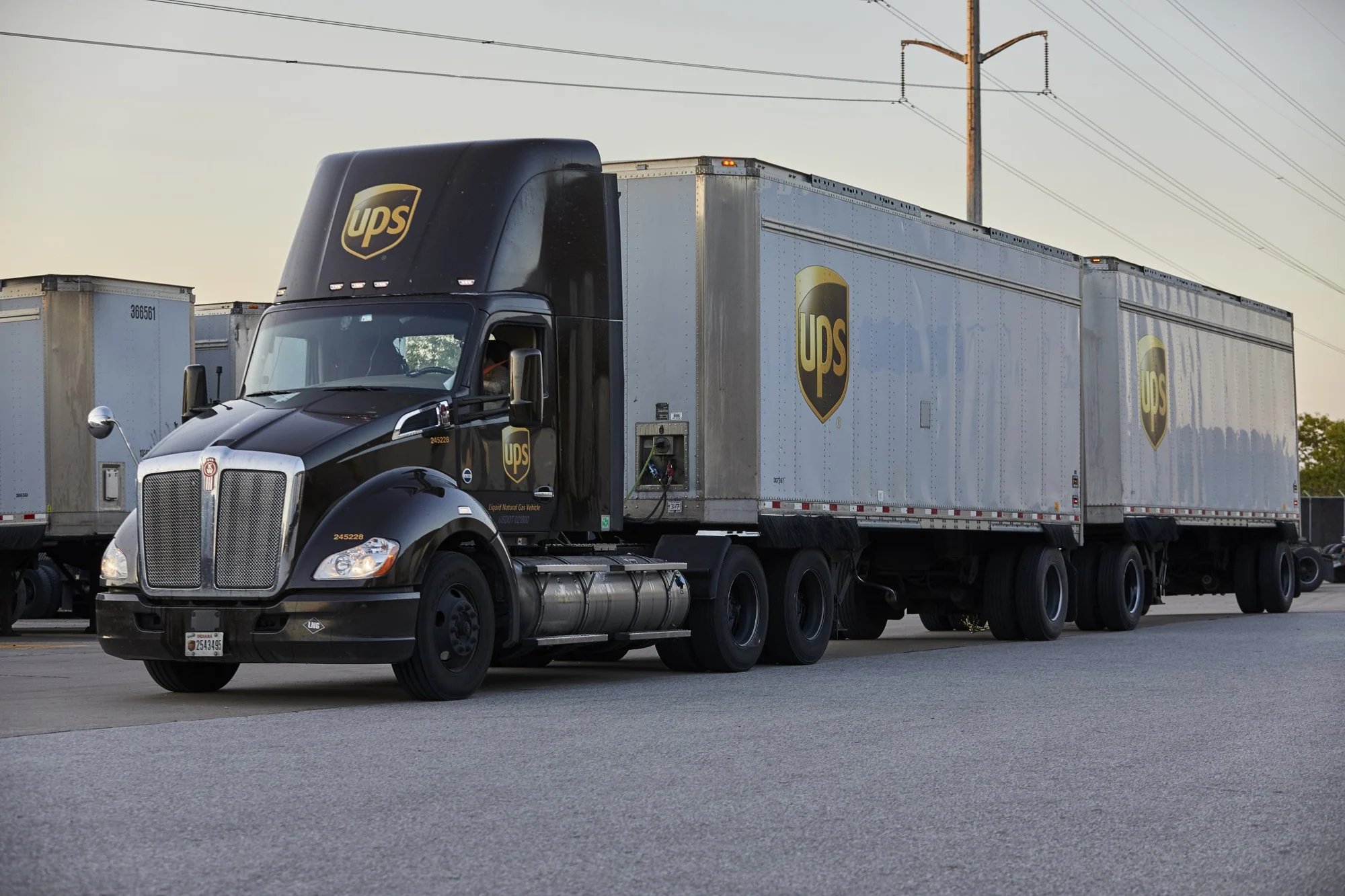Many of the themes from FedEx's (FDX +1.26%) latest results played out in United Parcel Service, Inc.'s (UPS +0.77%) third-quarter results as well: consumer deliveries growing more than business deliveries, strong e-commerce demand, an increasing demand for certain premium services, and disappointing freight demand. Let's take a look at the earnings report and how UPS is managing it all.
United Parcel Service third-quarter results: The raw numbers
Overall revenue grew 4.9%, but a 5.2% increase in operating expenses held back operating profit growth to just 2.5% compared to the same period last year. It was pretty much in line with expectations, and management reiterated its outlook for full-year diluted EPS of $5.70 to $5.90.
In fact, probably the biggest headline news relates to UPS' decision to purchase 14 Boeing 747-8 freighters, with options to buy 14 more -- an act largely in response to strong air product volumes in recent years.
That said, there are a lot of interesting underlying trends in UPS' results. The best way to see them is to look at segmental results.
| Segment | Revenue (millions) |
Growth (YOY) | Operating Profit (millions) |
Growth (YOY) |
|---|---|---|---|---|
|
U.S. domestic package | $9,289 | 4.8% | $1,252 | (0.5%) |
| International package | $3,024 | 2.2% | $576 | 13.6% |
| Supply chain and freight | $2,615 | 8.1% | $206 | (5.9%) |
Data source: UPS.
U.S. domestic package segment
One issue facing FedEx and UPS is that burgeoning e-commerce demand can put pressure on margins. Indeed, as you can see below, volume growth across the various elements in UPS' U.S. domestic package segment was pretty strong. Note below how UPS' premium next-day-air volumes continue to grow more than its less expensive ground deliveries. FedEx reported a similar trend with its overnight box volume growing more than its deferred option.

Data source: UPS. Chart by author.
Unfortunately, revenue per package in the segment only increased by 0.9% compared to the same period last year. Lower oil prices helped reduce the fuel surcharge by around 40 basis points (100 basis points equals 1%), but according to the earnings release, "Increases in base rates offset changes in product and customer mix."
In plain English, this means that UPS is trying to increase pricing -- FedEx is following a similar strategy -- in order to counter the margin-depleting effects of strong e-commerce demand (a subject discussed in more detail here).
The impact of e-commerce on the segment's margin came up on the earnings call, with CFO Richard Peretz reminding analysts that "we have, as I mentioned last quarter, some change because of work days and some year-over-year comp issues in the third quarter, but we expect the whole year that we will see a margin expansion."
International package segment
The segment grew operating profit by $69 million compared to the last year's third quarter, which more than offset the $19 million decline from the other two segments combined. In fact, it's the seventh straight quarter of double-digit operating profit growth in the segment.
In common with the U.S. domestic package segment, international package saw strong daily package volume growth of 7.5%, but average revenue per piece declined 2.8% in the quarter. In short, international package profits are growing strongly due to margin improvements and more cost efficiency.

Image source: UPS.
Supply chain and freight segment
Don't be fooled by the 8.1% revenue growth in the quarter, because it's primarily due to the acquisition of Coyote Logistics. In fact, management stated that "weak market conditions in the Air Freight Forwarding and LTL (less than truckload) markets weighed on top-line growth." In fact, UPS' freight revenue declined 5.3% in the quarter, and operating profit declined for the third straight quarter -- largely a consequence of declining U.S. industrial production.
Looking ahead
There is little that FedEx and UPS can do about trends in the economy, but both are actively trying to increase pricing in order to profitably capture burgeoning e-commerce demand. As such, the coming quarter -- which contains the all-important peak demand period caused by the holiday season -- is important for two reasons: It will not only confirm whether both companies can deal with peak demand effectively, but it will show investors how well the companies are succeeding at maximizing e-commerce profitability while waiting for the rest of the economy to improve.







